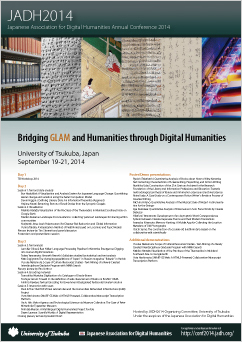Session 2-3
Aceh Paleotsunami Reconstruction for Disaster Risk Reduction and Global Information
- Nurjanah Jane (Tokyo Metropolitan University)
- Hidenori Watanabe (Tokyo Metropolitan University)
Indonesia is a disaster-prone area. Indian Ocean Tsunami 2004 is one of the biggest catastrophe incidents over the last 100 years .The Indian Ocean tsunami contributed to the damaged of infrastructure, individual properties and environment in many coastal areas around the Indian Ocean. The tsunami was estimated to cause more than 200,000 dead casualties. Based on some reviews, the tsunami disaster in Aceh is not new and it has happened several times. Although the tsunami is not new and it had happened several times in Aceh, that disregards lessons from the past. Discontinuation of knowledge about earthquake and tsunami has led to information gap in the majority region of Aceh. Today, there are several ways to explore and to track tsunami record in the past. One of them is called as paleotsunami. Paleotsunami is a theory to track the record of tsunami events in the past, either through scientific or historical approaches. The track record of tsunami event in Aceh or Aceh paleotsunami has been traced since thousands years ago, i.e. the scientific research by means of tsunami deposit carbon dating has been recorded since prehistoric period around 5000 years ago. This method firstly develop systems analysis of tsunami deposit records from tsunami in the past, where the tsunami caused sea water flooded into the mainland, creating deposits typical horizontal, and white sand. The tsunami deposits is geological evidence that can be analyzed using carbon dating to determine the time tsunami events that occurred in the past. Coastal geomorphology records can also detect tsunami events in the past from the evolution of the beach to be an indication of the tsunami earlier. Another way to track paleotsunami by historical approach. The reconstruction of Aceh paleotsunami based on history approach could be performed using prose and manuscripts literatures. The history recording through ancient manuscripts since 1000 years ago have noted earthquake occurances that related to tsunami events in Aceh. By integrating and synchronizing paleotsunami Aceh into science and historical approach, the validity of Aceh tsunami records from 1000 years ago will be more precise. Aceh Paleotsunami Digital Archive is one of the ways to fill the gap of information from past disaster for global information.
- Keywords
- paleotsunami, gap information, DRR, global information.
Reference
- Monecke, Katrin: Coastal Progradation Patterns as a Potential Tool in Seismic Hazard Assessment, Wellesley College: USA (2006).
- Candace, A., Grand, P., Benjamin P. Norton, Charles M. Rubin, Andrea D. Hawkes, Mudrik R. Daryono, Gary Rosenberg and Stephen J. Culver: “Stratigraphic Evidence for an Early Holocene Earthquake in Aceh, Indonesia,” Elsever, Vol. 54, No. 142–151 (2009).
- Kesley, Ismail dkk.: Great Earthquakes and Tsunamis of the Northwestern Aceh Coast Sumatra (2011).
- Ella, Meilianda: Past, Present and Future Morphologycal Development of a Tsunami Affected Coast, Netherlands (2009).
- Hermansyah: Mitigasi Bencana dan Kearifan Lokal Aceh, ADIC International Proceeding, Malaysia (2011).
- Krueng Raja and Sjeh Rih: Geumpa di Atjeh, 2(08)00236-X ANZYB LAMJONG, Lorong puloot 533/C, Banda Aceh (1964).
- Watanabe, Hidenori: Aceh Tsunami Archive, Industrial Art of Tokyo Metropolitan University, Japan (2013).
- Nurjanah, Nazli Ismail, Husaini Ibrahim, Hermansyah: Aceh Paleotsunami for Disaster Risk Reduction, E-Journal Program Pasca Sarjana Universitas Syiah Kuala, Banda Aceh (2013).

